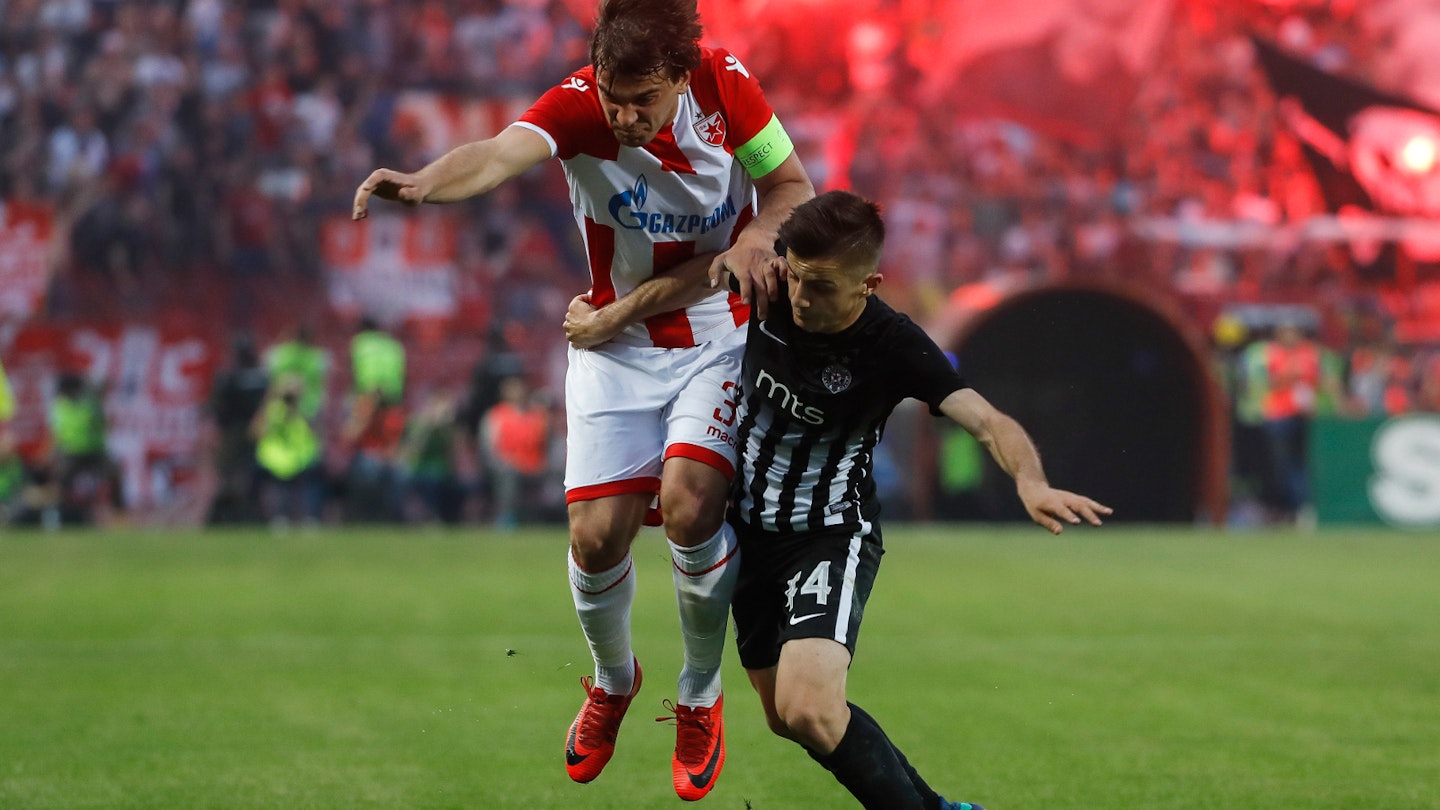Discover Sports Culture in Belgrade
Sport has always been a significant aspect of Belgraders’ identity. Since Yugoslavia finished fourth at the first football World Cup in Uruguay in 1930, sports have been deeply rooted in the local culture. When sharing about Serbia with outsiders, locals frequently mention notable athletes, including tennis world number-one Novak Đoković, former Manchester United captain Nemanja Vidić, and NBA stars Nikola Jokić and Vlade Divac.
This passionate affinity for sports means that in Belgrade, you can find people engaged in everything from American football to lacrosse. However, the most popular sports in Serbia include football, basketball, tennis, water polo, and volleyball, with running also gaining traction. With numerous sporting events happening throughout the year, accompanied by fervent fans, Belgrade offers ample chances to immerse yourself in Serbia’s dynamic sports culture.
Experience the ‘Eternal Derby’
The two leading football clubs in Belgrade, Crvena Zvezda (Red Star) and Partizan, share a legendary rivalry known as the Eternal Derby, which began with their establishment in 1945. While both teams are globally recognized for their devoted fans, they have also achieved remarkable successes in their history. Red Star claimed the title of the best team in the world when it won the Intercontinental Cup and the European Champions Cup in 1991. Check the club’s museum at Marakana Stadium for a glimpse of their trophies. On the other hand, Partizan participated in the first-ever European Champions Cup match in 1955, finished as runners-up in 1966, and was the first Serbian club to qualify for the UEFA Champions League in the 2003–04 season.
These clubs command intense loyalty across Serbia and the wider Balkans, making their matches within the Serbian league a visual spectacle for football enthusiasts. Expect massive pyrotechnic displays at their respective stadiums, located not far from each other on Belgrade’s Topčider Hill. Tickets for the Eternal Derby can typically be purchased a few weeks in advance at stadium ticket booths, with prices ranging from 5 to 15 euros. It’s advisable for casual fans to avoid the southern and northern stands, reserved for hardcore supporters, where incidents of hooliganism can occur. Match dates can be found on the official websites of Red Star and Partizan.
Feel the Serbian Hoop Hype
Given the average height of Serbians (1.82m), it’s no surprise that the nation excels in basketball. Since the breakup of Yugoslavia, the Serbian men’s team has won the FIBA World Cup twice and earned two Olympic silver medals (from Atlanta and Rio de Janeiro). Moreover, Serbia consistently produces NBA stars, and its top coaches lead prominent EuroLeague teams.
Belgrade’s premier basketball arena, Štark Arena, opened in 2004 and hosted significant events like the FIBA Diamond Ball and EuroBasket. However, it mainly accommodates major tournament games, including the 2018 EuroLeague Final Four and the 2019 FIBA Women’s EuroBasket. For local and club basketball games, you can attend Hala Pionir, where tickets are available a few days prior to games.
If you prefer to play basketball, head to the courts in Ada Ciganlija park. On pleasant days, you’ll find crowds of basketball enthusiasts eager to let you join in on a game.
Play on Novak Đoković’s Tennis Courts
Tennis has been a staple in Serbia since before WWII, but it skyrocketed in popularity following the rise of local stars Novak Đoković, Ana Ivanović, and Jelena Janković. Between 2009 and 2012, Belgrade hosted the Serbia Open, an ATP World Tour 250 series men’s tournament, at the Novak Tennis Centre, owned by Đoković’s family. While encountering Đoković himself might be rare, you can still challenge yourself on one of the clay courts by the Danube or visit his trophy room, which showcases some remarkable Grand Slam accomplishments.
Dive into the Balkan Water Polo Craze
Serbia is a major player in the world of water polo, with its national men’s team gaining immense popularity. Shortly after winning the Olympic gold in Rio de Janeiro in 2016, they became the second team ever to hold gold medals across all major international competitions in a single year, a feat previously achieved only by Hungary.
Although the national team rarely plays in Belgrade, visiting one of the city’s public swimming pools—such as Tašmajdan, Banjica, and 25 May—might allow you to observe young water polo talents training. For those eager to watch a game, inquiring about upcoming matches for the local clubs—Partizan at Banjica or Red Star at 25 May—could lead to an impromptu game experience, as matches often have little audience attendance.
Hit the Ground Running in the Belgrade Marathon
The most prominent sporting event in Belgrade is the annual marathon, held every April since 1988, including during the tumultuous spring of 1999 amid NATO bombings. In addition to the main marathon, a half-marathon and a popular 5 km ‘fun run’ attract tens of thousands of participants. The marathon starts in front of the Sveti Marko Church and concludes at Terazije square, taking runners across the river through New Belgrade and past key city landmarks. With the rising interest in long-distance running since 2017, the Belgrade Half-Marathon has also been introduced in autumn, encouraging runners of varying skill levels to participate. Registration can typically be done a few days before the event via the Belgrade Marathon website.




